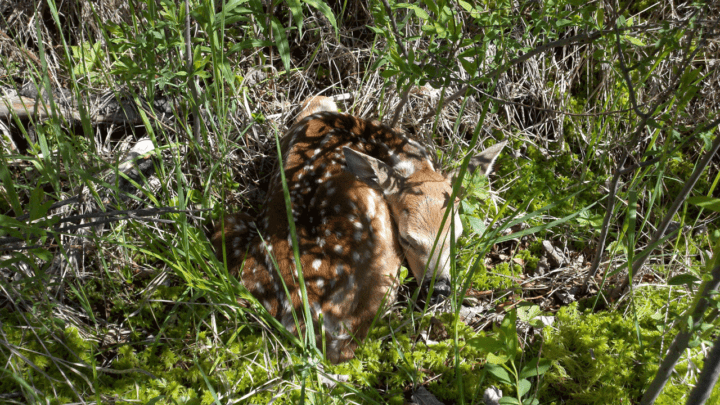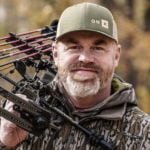The months of May and June usher in fawning season for whitetail does across much of the country. And while there’s been a lot of focus on building better habitat for turkeys, particularly turkey poults, we should also consider whether our property features ideal fawn habitat for the deer as well.
Is your property set up to maximize the opportunity for does to drop their fawns? What changes need to be made to create better habitat for fawns?
For insight into these habitat questions, I reached out to Dr. Bronson Strickland at the MSU Deer Lab. He offered some great input on what hunters should consider when it comes to creating better deer habitat on their land.

Best Habitat for Fawns
What particular features on the landscape are deer looking for to start their fawns? What is the ideal habitat for fawn survival?
What are does looking for as they enter this cycle of life?
Dr. Strickland says herbaceous cover is the key. “Just think of an area comprised of tall grasses, broadleaf plants (forbs), and shrubs that provide screening cover making it very difficult to see a bedded fawn,” he says.
Do you have good fawn cover on the properties you hunt? Do you have the cover that provides concealment from predators on the ground, or even above?
In the MSU Deer Lab video below, Dr. Strickland suggests using the Basketball Technique to determine if you have good fawning cover on your property. It’s a simple test that’ll make it really clear on what your habitat is lacking.
The Hiding Phase
Creating habitat suitable enough to hide a fresh fawn is a big deal. They will need this cover for longer than most hunters realize.
How long will fawns lay still before getting up and traveling with the mother?
“The hiding phase lasts about 30 days,” says Strickland. “After about a month you will see fawns traveling with their mother more often.”
Fortunately, a fawn’s God-given camouflage does an incredible job of helping them blend in, even when they seem to be laying in the wide open. As you’ll see in the video below, a little cover goes a long way in hiding a whitetail fawn.
Remember, cover and concealment are key. And that cover and concealment can be as simple as shade provided by short trees and brush.
How Can Hunters Build Better Fawn Habitat
Can hunters play a significant role in helping build better fawn habitat?
Dr. Strickland says, “Absolutely!”
“Soil disturbance and sunlight are the answer,” he says. “Creating gaps in the forest canopy will stimulate vegetation growth, perfect for fawn habitat. If you have areas dominated by grass, you can disk the ground in the fall to stimulate growth of forbs the following spring – just in time for good fawning habitat.”
Open up the canopy. Let the light in. You’ll see immediate growth on the landscape. And it’s exactly what’s needed for growth in your local whitetail herd as well.
Check out the video below for a look at what happens when we fail to manage for ideal fawning habitat.
5 Ways to Build Better Fawn Habitat
In their endless quest to help hunters build better deer habitat, the crew at the National Deer Association (NDA) recently shared 5 steps to take to build better habitat on the land you manage and hunt.
- Convert Non-Native Grasses to Cover – Cover is key. If it’s not producing food, turn it to cover.
- Create Forest Openings for Bedding Thickets – Help them hide. Open the canopy, grow greater cover.
- Plant a Native Grass / Forb Blend – Forbs equal food. It’s what deer rely on throughout the day.
- Maintain Old Fields – Old fields can provide great cover, just be sure you provide the maintenance necessary to keep these old fields from turning into young forests.
- Improve CRP Grasslands – Don’t let grasses dominate the field. Make sure forb diversity is a part of your plan in the maintenance process.
What steps are you taking to build better fawn habitat on the properties you hunt? Growing a deer herd goes far beyond simply providing food on the landscape. Providing adequate cover for herd growth in the fawning process goes a long way in the overall health of your herd.
Remember the items mentioned above as you consider how to better maintain your property for wildlife this season.

 By
By 



